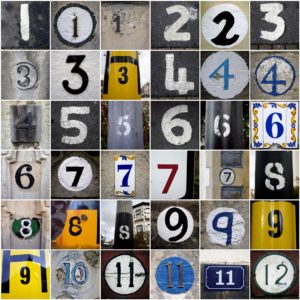Observations you may have in August: During warm weather you may observe what may appear as unusual behaviors by your bees – you’ll see fanning, bearding, and perhaps even robbing.
Fanning: Bees improve ventilation in the hive by standing on the landing in front of the entrance with their heads facing toward the hive entrance. As they fan their wings, warm air is pulled out of the hive. Bees on the portion of the bottom board inside the hive will also fan. Fanning also helps ripen honey – removing moisture so it can be capped.
Bearding: When bees are covering an area on the outside of their hive it is called bearding. This activity provides another way for the bees to cool themselves and to lessen the heat load inside the hive. They are not preparing to swarm.
There are several ways to improve ventilation in the hive such as using screened bottom boards; placing a slatted rack under the bottom board; slightly raising the outer cover by gluing popsicle sticks across the corners of the inner cover (just be careful with this last option to not enable entry by yellow jackets or other potential invaders lurking about the hive site).
Robbing: Weaving flight activity at the hive entrance and presence of fighting bees, or half bodies of bees, on the landing board or on ground in front of hive are indicative of robbing which occurs if foragers are challenged to find nectar and a colony is weak. The aroma of ripening nectar and honey in other colonies will be attractive. The best way to prevent robbing activity is to maintain colonies of equal strength; keep the entrances of all weak or small colonies reduced or use robbing screens; avoid open feeding of sugar syrups or honey and do not discard any hive material you may clean out during inspections near the hives.
Beekeeper Activities: Requeening, extracting honey, managing mites and prepping for winter.
It is not too late to requeen in order to have a young, strong queen to take the colony through the winter. Allowing the bees to create a new quean will break the bees’ brood cycle and consequently the mites’ cycle as well.
August is the popular time to extract honey. Reserve an extractor from PSBA. If you have foundationless frames crush and strain is an option. Regardless of your extraction method – don’t starve your bees! Leave 50-60 lbs of honey on the hive for their winter stores. Before harvesting, take the PSBA training on Honey Extracting 101 so you don’t jeopardize your bees or harvest unripe honey. When harvesting honey frames work quickly to prevent a robbing situation – create a “honey safe” by enclosing harvested frames inside a super with solid bottom and top then taking them inside for extraction. The subject of pollen makes for very interesting reading. Too much pollen might indicate a failing queen.
Varroa Mites! Warm temperatures improve the effect of all mite medications so if using chemical treatments for varroa, applying in early August will enable the colony to raise healthy winter bees (which need to be healthy enough to live over several months). Most mite treatments should not be used until after your honey harvest -but Hopguard and MAQS are a couple that can be used with honey still on the hive. As with any chemical, apply according to directions to avoid contaminating honey intended for consumption. Mite management is addressed by many experts and you can even participate in PSBA’s mite research or view this online seminar for monitoring your hives for mites and other issues.
Plan your fall feeding program. As mentioned above, a colony in the PNW needs a minimum of 50-60 lbs of honey going into winter to survive. If your colony has less than this after the main nectar flow has ended, combining the colony with a stronger one or feeding it will be necessary. In the fall, a 2:1 sugar syrup mixture is used, as the thicker consistency is closer to honey and requires less work by the bees to evaporate moisture before they store it away for future use. There are several methods of providing the fall feeding. Fondant and dry sugar are options when nighttime temperatures are consistently below 50 degrees F. There will be more about feeding in the September calendar.
Urban nectar sources in August: Knotweed, dandelion and clover grow freely. In urban yards bees will enjoy monarda, Echinacea, annual sunflowers, sedum, rose of Sharon, thyme, agastache, eucryphia. The list goes on. Plan a pollinator garden next year by referring to the PSBA brochure “Honey Bee Friendly Plants for Washington’s Puget Sound Area”. Fireweed is prevalent at high altitudes as is Pearly Everlasting. “Garden Plants for Honey Bees” by Peter Lindtner gives pollen and nectar ratings for hundreds of plants organized by their blooming month.
Bee Facts: A bee has to visit almost 2 million flowers to collect enough nectar to make 1 pound of honey. Bee Facts from “The Beekeepers Handbook” by D. Sammataro and A. Avitabile
